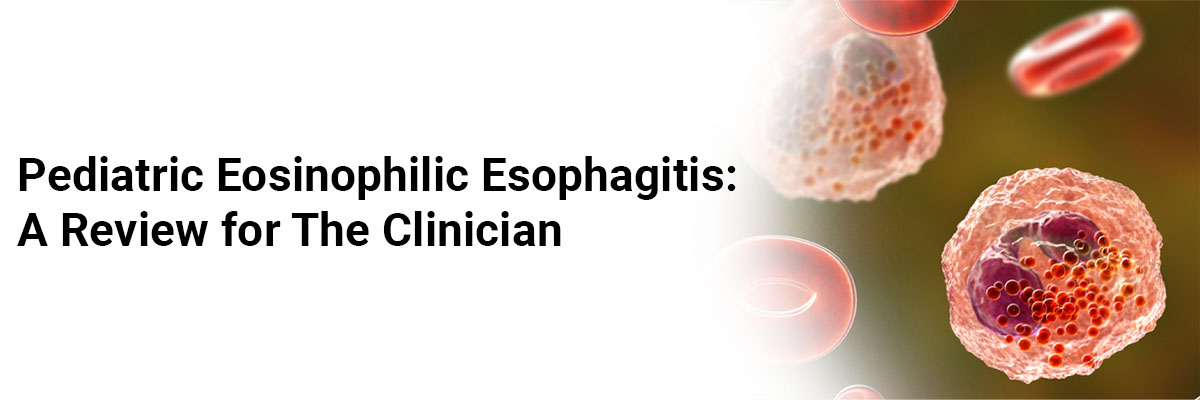
 IJCP Editorial Team
IJCP Editorial Team
Pediatric eosinophilic esophagitis: a review for the clinician
Eosinophilic esophagitis (EoE), a chronic clinical-pathologic disease, is characterized by eosinophilic infiltration of the esophageal epithelium with esophageal dysfunction symptoms. It does not have any age predilection and shows different clinical manifestations depending on the age of onset. Currently, esophago-gastroduodenal endoscopy (EGD) with biopsy is the gold standard for EoE diagnosis.
The recent consensus guidelines recommend proton pump inhibitors, corticosteroids, and elimination diets as first-line therapy options. The treatment aims for clinical and histological remission to avert long-lasting untreatable fibrosis.
A recent article described a treatment algorithm for managing EoE as-
- PPIs: These are 30–60% effective, easy, and have no side effects.
In the case of histological remission, continue it for 1-3 years with follow-ups. In case of no Histological remission, add steroid or start diet.
- Steroids: These are 60–80% effective, easy, and have rare side effects.
In case of histological remission, continue it for 1-3 years with follow-ups. In case of no histological remission, start a short course of oral steroids or add PPI or start the diet.
- Diet: These are 30–90% effective, complex, and, with more foods eliminated, show more effectiveness.
In case of histological remission, add food (s) and follow-up. If histological remission does not occur, add PPI, eliminate more food(s), or begin steroids.
A multidisciplinary approach (involving allergists, gastroenterology, dietitians, and pathologists) is recommended for managing patients affected by EoE due to the complexity of its treatment.
Over the last few decades, research has advanced in terms of a better understanding of EoE pathogenesis, the evaluation of less invasive diagnostic tools, and the development of new therapeutic approaches. However, there are still several unmet needs, like finding non-invasive disease-monitoring methods and biomarkers for daily practice and the development of safe long-term maintenance therapy.
Source: Ital J Pediatr. 2021 Nov 22;47(1):230. doi: 10.1186/s13052-021-01178-2. PMID: 34809686; PMCID: PMC8609874.

IJCP Editorial Team
Comprising seasoned professionals and experts from the medical field, the IJCP editorial team is dedicated to delivering timely and accurate content and thriving to provide attention-grabbing information for the readers. What sets them apart are their diverse expertise, spanning academia, research, and clinical practice, and their dedication to upholding the highest standards of quality and integrity. With a wealth of experience and a commitment to excellence, the IJCP editorial team strives to provide valuable perspectives, the latest trends, and in-depth analyses across various medical domains, all in a way that keeps you interested and engaged.




















Please login to comment on this article